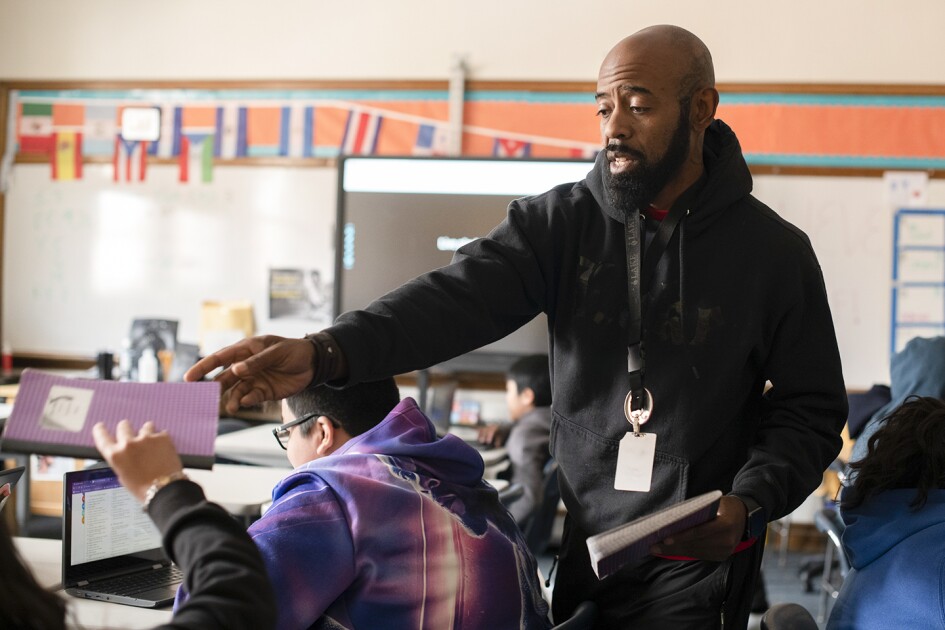Tuesday, April 30th was the last “special education for general education teachers” class of my first semester instructing undergraduate preservice educators at the University of North Carolina at Charlotte. Over the preceding 14 weeks, my 27 students—mostly elementary education majors—had learned about students with disabilities, Positive Behavior and Intervention Supports, and ways to teach students with different learning needs. The students were seeing the topics we talked about in class play out in their own student-teaching experiences—students with severe behavior concerns, teachers collaborating closely with school support staff, how a child’s disruptive home life can impact academics. The course content could get heavy, but on the final day of class, the vibe was good.
Ten minutes into class, four students huddled around a phone.
“What’s up?” I asked.
“There is an active shooter on campus,” they replied.
I leaned my elbows on the podium. “Who is saying that?”
“Twitter,” they answered.
As if choreographed, students across my class looked at their computers and phones.
“At Kennedy.”
“By the library.”
Two students in the back of the classroom gathered their things and ran out. “Sorry!” one called as she ran out.
I looked at my phone. No university update.
“I’ll be honest,” I told the remaining students. “I don’t know exactly what to do here, so if you feel like you need to leave, you can. I will stay until we know more.”
Before I could decide if I would try to continue teaching, my PowerPoint was taken over by the school’s threat system announcing: Run. Hide. Fight. Stay where you are. Secure your location. Wait for more information.
One of the first things I did in my classroom was figure out how to escape if there was an active shooter.
Seven years earlier, I was on the leadership team at a school in Chicago. After the Sandy Hook shooting, I helped plan our campus response plan for an active shooter. In my four years in the classroom prior, I had never thought about a shooter on campus. I had worried more about fire drills and, in the Midwest, tornadoes.
When I re-entered teaching in 2018, after five years consulting, writing, and earning my doctorate degree, there had been more than 200 school shootings. One of the first things I did in my classroom was figure out how to escape if there was an active shooter.
So, when we gathered what was happening last Tuesday—there was a shooter in a building across campus, shots had been fired—my first thought was: Well, I guess this is my turn.
In a chemistry-lecture-hall-turned-education-classroom, my students and I barricaded the unlockable doors with the only movable items: a lectern and table. We turned the lights off and sat against the walls. Students’ faces were lit by phone screens filled with texts from family and friends, Twitter updates, and news feeds. For the first hour the information was spotty. There was one shooter, maybe two? The police were looking for someone with explosives. They were running through the woods behind campus. The library was being evacuated. Multiple people had been shot. Seven-ish were wounded. The police were outside.
In our room, there was an uneasy calm.
“Don’t worry, Dr. Cleaver,” one student told me, “my high school had an active shooter once, I know what to do.”
“I guess this is just what we should expect, right?” said another, “going into teaching?”
One student expressed frustration at how panicked some of her classmates seemed. “They are going to be teachers,” she said, “they have to know how to stay calm in this kind of thing.”
One mentioned an active-shooter training she had participated in just hours earlier at an elementary school. Another shared the experience of being in a school as a volunteer tutor during a lockdown and not knowing if it was real or a drill.
These preservice teachers were all excited to be put in charge of their own classrooms. They did not yet have a roster of their own, but they were deeply invested in the children at their student teaching sites. They desperately wanted to make a difference. They spoke honestly about their concerns teaching diverse groups of students and already had individual students that kept them up at night. We hadn’t talked about school shootings in class. When they had mentioned feeling overwhelmed with the job of teaching, their comments involved supporting students with behavior concerns, managing their time, handling parents.
After two-and-a-half hours of lockdown, we left the building, walked past a line of police cars to the parking deck, and drove home. In the days following, similar to any other class, I played my class over in my mind.
Usually after class, I reflected on how I had presented information: Was I clear? Did the students understand? Should I reteach anything?
On May 1st, I wondered: Should I have responded differently? Should we all have left immediately? Did I do the right thing? Did I say the right thing? Did I make them feel safe?
I don’t know if one active-shooter lockdown will change how these teachers feel about working in education. But, I could forgive them if they decided that they did not want to go into a profession that assumes first-responder status. They may very well decide they do not want to have to shelter in place with a class of 5-year-olds who are theirs to protect, with less know-how, communication, and security than we had in our college campus room. I could understand if they don’t want to go into a job where, when you are told to “run, hide, or fight,” you can’t run home to your own families because you are in charge of a classroom of children.
Yes, teaching is one of those professions that assumes a lot. But, I wonder, when will it assume too much?








